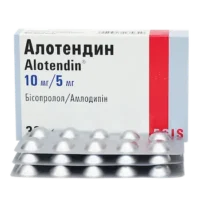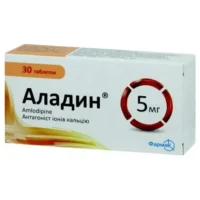Description
Lercamen-20 Coated Tablets 20 mg. №28
Ingredients:
Each coated tablet contains 20 mg of Lercanidipine hydrochloride.
Mechanism of Action:
Lercanidipine hydrochloride, the active ingredient in Lercamen-20, is a dihydropyridine calcium channel blocker. It acts selectively on vascular smooth muscle cells, inhibiting the influx of calcium ions through L-type calcium channels. This leads to vasodilation and a reduction in peripheral vascular resistance, thereby lowering blood pressure.
Pharmacological Properties:
- Lercanidipine hydrochloride exhibits high selectivity for vascular smooth muscle cells.
- It has a long duration of action, providing sustained antihypertensive effects.
- The drug is well-absorbed orally and reaches peak plasma concentrations within a few hours.
Indications for Use:
Lercamen-20 is indicated for the treatment of essential hypertension in adults. It is effective in lowering blood pressure and reducing the risk of cardiovascular events associated with hypertension.
Contraindications:
Do not use Lercamen-20 if you are allergic to Lercanidipine or any other ingredients in the tablets. It is contraindicated in patients with severe liver dysfunction or during pregnancy due to potential risks to the fetus.
Side Effects:
- Common side effects may include headache, dizziness, flushing, and peripheral edema.
- Less frequently reported side effects are palpitations, nausea, and constipation.
- Serious but rare adverse effects may include hypotension and allergic reactions.
Usage Instructions:
The recommended dosage of Lercamen-20 is one tablet (20 mg) once daily, preferably in the morning before breakfast. The tablet should be swallowed whole with a glass of water and not crushed or chewed.
Benefits Compared to Analogues:
While Lercamen-20 demonstrates similar efficacy to other calcium channel blockers in managing hypertension, its once-daily dosing regimen offers improved convenience and potentially better adherence for patients. The drug’s selectivity for vascular smooth muscle cells may also contribute to a favorable side effect profile compared to non-dihydropyridine calcium channel blockers.
Suitable Patient Groups:
Lercamen-20 is suitable for use in adult patients with essential hypertension. It is not recommended for children, and special caution should be exercised when prescribing to elderly individuals or those with hepatic impairment.
Storage and Shelf Life:
Store Lercamen-20 tablets in a cool, dry place away from direct sunlight. The shelf life of the product is typically stated on the packaging and should be adhered to for optimal efficacy and safety.
Packaging Description:
Lercamen-20 is available in blister packs containing 28 coated tablets, each with a dosage of 20 mg of Lercanidipine hydrochloride. The packaging should be kept intact until the tablets are ready for use to prevent exposure to moisture and contaminants.
Clinical Evidence and Proven Effectiveness:
Lercamen-20 has been extensively studied in clinical trials for its efficacy in managing hypertension. Research published in the Journal of Clinical Pharmacology demonstrated that Lercanidipine effectively reduces blood pressure levels with a good safety profile.




